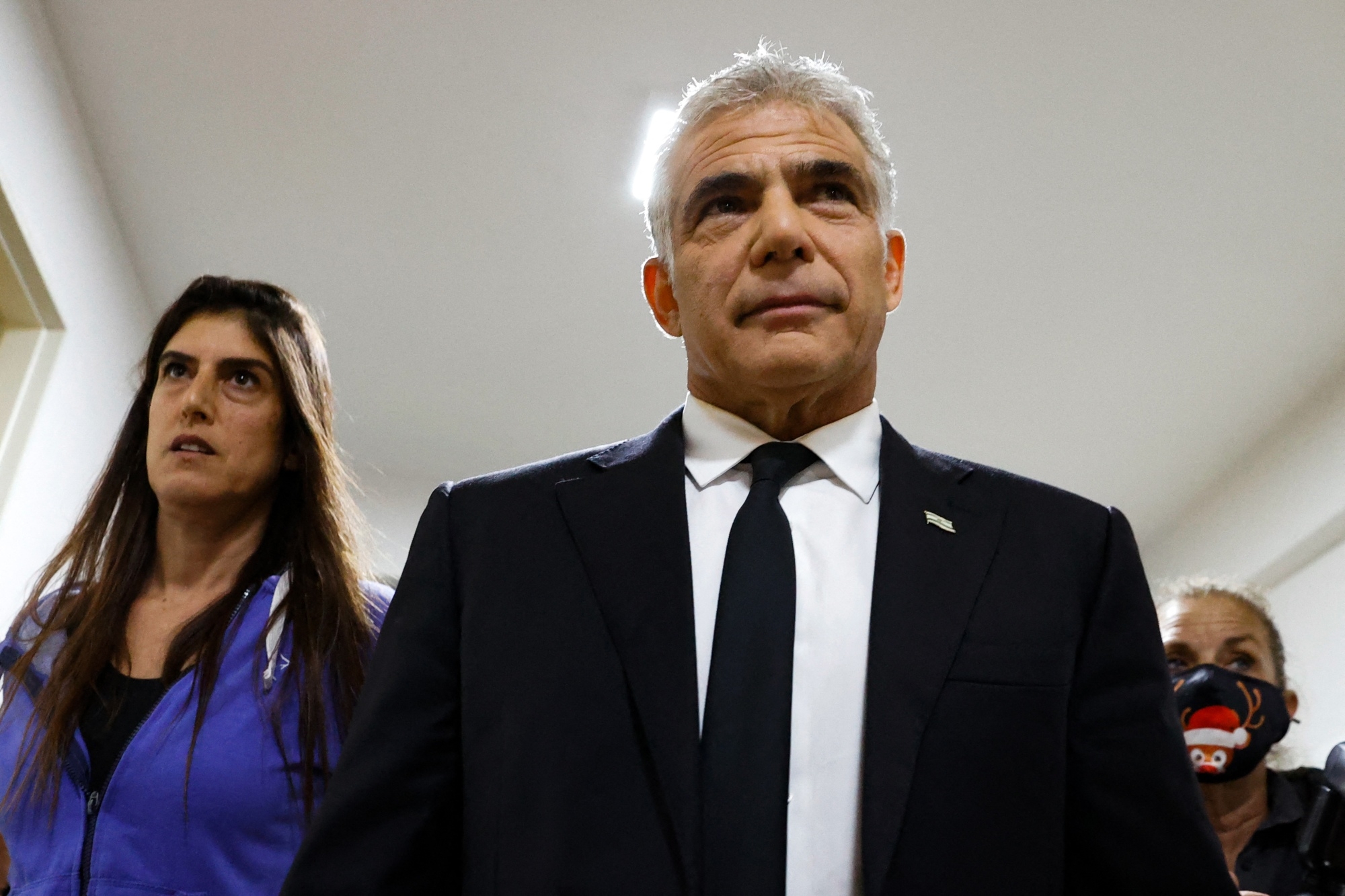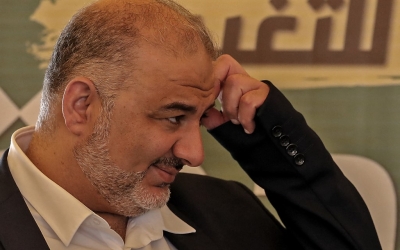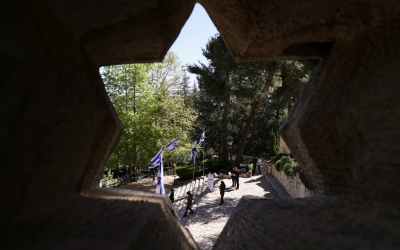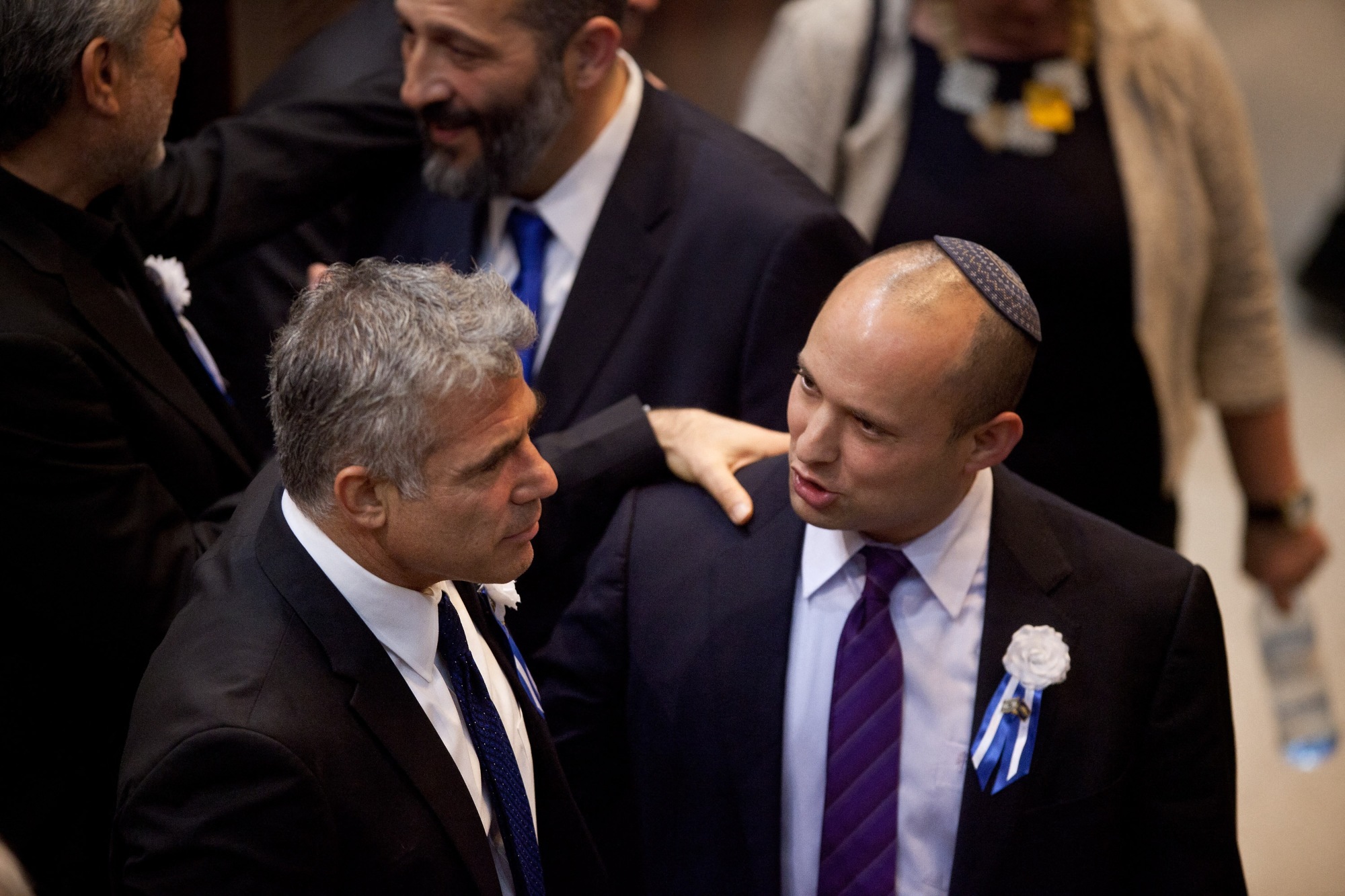Israel elections: Yair Lapid, the man behind the scenes

Naftali Bennett, head of the far-right nationalist Yamina party, might soon ascend to the premiership - the most important role in Israeli politics - as the replacement of longstanding prime minister, Benjamin Netanyahu.
The real engine and mastermind behind this historic development is Yair Lapid, head of the centrist Yesh Atid party, with whom Bennett announced an alliance on Sunday in a bid to unseat Netanyahu.
Lapid’s most obvious contribution to this development of potentially historic consequences is the fact that while his party won 17 parliamentary seats to Yamina's seven in the last round of elections, he's offering Bennett the chance to serve as prime minister first in a planned role rotation between the two leaders.
At 57 years of age, Lapid is now playing a pivotal part in Israeli politics.
He entered the political arena as a small-scale celebrity - a prolific writer and popular columnist for the widely circulated Yedioth Ahronoth daily, an occasional actor and songwriter, TV presenter and news anchor for the most important weekend TV news programme.
But what seemed to be a spectacular starry-eyed career with no real focus was in fact a prep school for the political career to come.
From journalism to politics
Lapid is currently on a mission to put an end to Netanyahu’s 12-year rule, which he deems to be a dangerous disaster. Israel's longest-serving leader, Netanyahu is now on trial on a number of corruption charges. These have been cited by his rivals as one of the main reasons why Israel needs a new leader, the argument being that Netanyahu might use a new term to legislate immunity to shield himself from legal accountability.
But Lapid understood that only a candidate from the right wing stands a chance of heading a government, even if he forms it himself behind the scenes.
This wouldn’t be the first grand gesture of his political career. Lapid already gave up on a rotation with Blue and White party leader Benny Gantz during the January 2019 elections, when he was perceived as an obstacle for voters who seemed to favour the Israeli army chief of staff over him.
Now, Lapid could fulfill his lifelong dream of premiership in the second half of the government’s term - if such a government is formed.
If it happens, he will also fulfill his commitment to his father, Yosef Lapid, once a prominent journalist, head of the Israeli broadcasting authority and of the centrist Shinui party.
On his deathbed in 2008, Lapid the elder told his son: “You will complete my job.” Thirteen years later, with ten years in politics under his belt, the son is on track to fulfill the dream of the father.
Over the years he spent working in the media, Lapid has learned how to approach and define Israel's centre and its needs. A master of Israeli consensus, his appeal to the widest common denominator brought him popularity and fame.
While well liked by the masses, he was ridiculed by more highbrow colleagues, who failed to understand his end game. More importantly, however, he was snubbed by the left, a sentiment that later spilled over to his early political life.
The first major step in bridging his two careers was the move from a popular entertainment TV show to the most popular Friday night news programme. He opened his very first appearance by stating: “I’m Yair Lapid and I’m wearing a tie.” But it was more than wearing a tie; it was the opening act on the road to the premiership.
The first to predict Lapid’s path was none other than Netanyahu himself. The possibility worried him enough that it led his Likud party to pass a law imposing a one-year “cooling” period for journalists seeking to enter politics.
Netanyahu was right. Lapid used his time on the air to learn politics, attack the system and jump-start his campaign. When he first joined Israel’s Knesset as an MP in 2013, Netanyahu congratulated him, somewhat sarcastically, on “now formally” joining political life.
The enemy of my enemy
The social and political experience Lapid accumulated over the years in the media paid off.
The mass social protests of 2011, the first to significantly involve the Israeli middle class, served as a perfect jumping board. These were exactly his people, the ones who would make up his cohort of voters.
Lapid aimed high right from the start, yet the 19 seats the brand new Yesh Atid obtained in the 2013 elections came as a huge political surprise.
Lapid had managed to form a kind of “all-Israeli” party - even embracing the ”light” religious sector. He stuck to the definition of his party as “centrist, with a slight tendency to the right”; as such, he fiercely attacked movements critical of the occupation like Breaking the Silence, claiming they undermined the foundations of Israel.
His political platform as regards the occupation and Israel's relationship with Palestinians can be summed up by noting that he has called for illegal settlement clusters to be annexed to Israel, while proffering support for a two-state solution.
The 2013 elections also marked the beginning of the alliance between Lapid and Bennett, referring to each other as “brothers” and claiming they could set aside major ideological differences and focus on common denominators in a collaboration.
That brotherhood - then widely criticised - fell apart at the seams at the time, but this prior history now serves the two men well, as they find themselves in the process of forming a new “government of change”.
Following his success in 2013, Lapid joined Netanyahu’s coalition government after being offered the post of finance minister. The offer was a trap, and he knew it - yet Lapid had no choice. Having spent much of his campaign asking "where does the money go?", the offer was one he could not refuse.
With no experience, he entered a ministry liked by none, and lost much of his popularity - as Netanyahu no doubt hoped and expected. In 2014, the centrist was fired by Netanyahu, who labelled him his nemesis, even when nobody else took Lapid that seriously.
Despite this unsuccessful term in office, Yesh Atid, which many had predicted was doomed to fall apart, won 11 seats in the 2015 elections, effectively turning Lapid into an active and efficient head of opposition.
In the first round of elections of 2019, he formed a block with Gantz’s newly formed Blue and White party. The joint bloc preserved 33 seats in the two elections that year - but the alliance fell apart in March 2020, when Gantz unexpectedly decided to join Netanyahu’s coalition in exchange for a rotation in the premiership that never materialised.
The past year in opposition served Lapid well. Even his more ardent opponents - he has no real enemies - have conceded that he matured and grew into the role.
As Israel’s political arena has descended into chaos, with successive legislative elections failing to designate a clear winner, Lapid has kept his calm, a rare quality in the era of Netanyahu. The former TV presenter has conducted the process of forming a coalition in an orderly fashion, and behind a smokescreen.
His closest allies claim Lapid is now more left-wing than he projects; the right claims he has become the “darling of the left”. He has not. The left has embraced him out of despair and a lack of real alternatives. With the political scene disjointed and in shambles, their main commonality is the desire to see Netanyahu off.
The most remarkable shift has been in Lapid’s relationship with Palestinian citizens of Israel’s political leadership. In 2013, he had stated his refusal to join an anti-Netanyahu bloc alongside the “Zoabis” - in reference to then-Balad party MP Haneen Zoabi and other members of the Arab Joint List coalition. He later apologized to MP Ahmad Tibi for this offensive remark. In 2021, he was the first to openly declare he was ready to form a government supported by the Joint List.
In nearly 11 years in politics, the “nice, lightweight guy” might now become prime minister. In a twist of fate, Netanyahu may have been the one to speed his rise to the top.
This article is available in French on Middle East Eye French edition.
Middle East Eye propose une couverture et une analyse indépendantes et incomparables du Moyen-Orient, de l’Afrique du Nord et d’autres régions du monde. Pour en savoir plus sur la reprise de ce contenu et les frais qui s’appliquent, veuillez remplir ce formulaire [en anglais]. Pour en savoir plus sur MEE, cliquez ici [en anglais].









